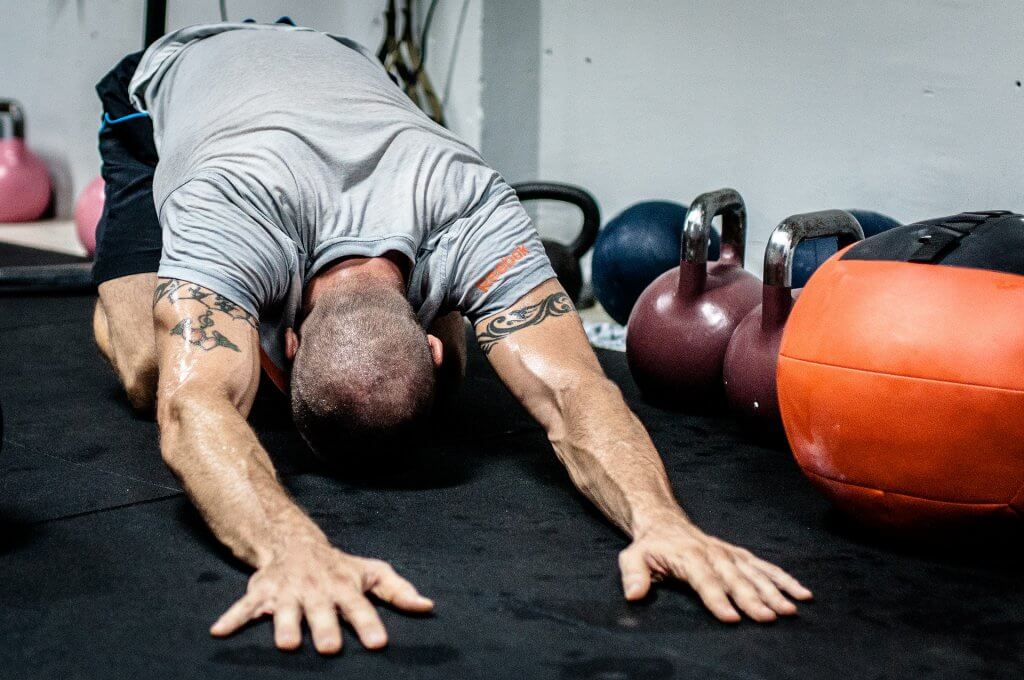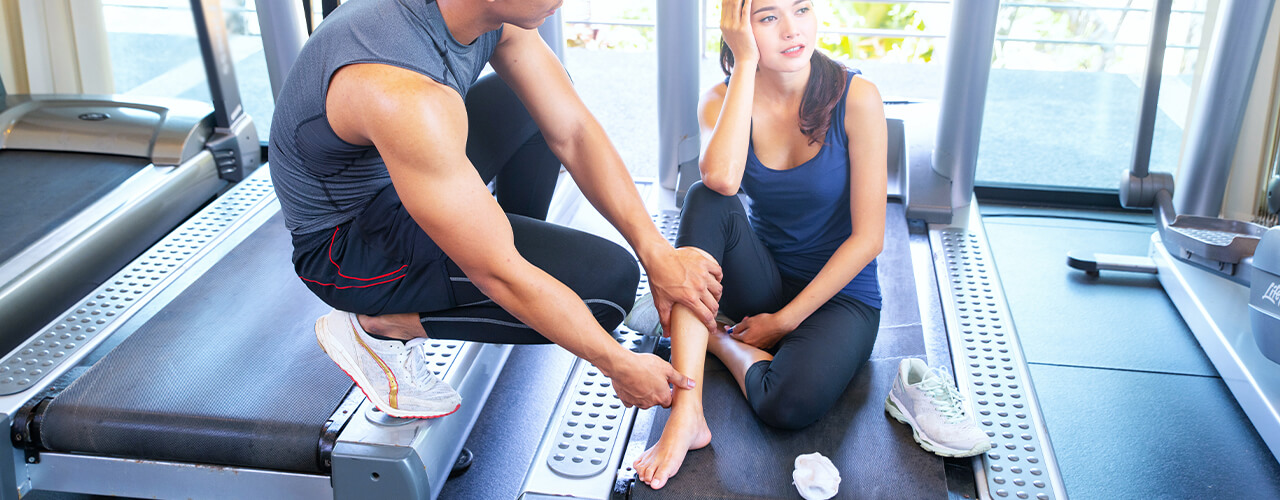One of the most common orthopedic conditions for which people seek medical attention is knee pain. It includes pain felt behind and around the knee cap, particularly when performing activities such as stair climbing, squatting, running, or walking while carrying a heavy load. Knee pain can make it difficult to participate in your favorite activities and complete daily tasks. It can last for years if not treated properly.
Knee pain can be caused by a number of factors, including knee stiffness, incorrect positioning of the knee cap while resting or moving, flat feet, poor exercise form, and weakness of the muscles that control the hip and knee.
A physical therapist can help you with your knee pain. Following an evaluation, a physical therapist will create an individualized comprehensive treatment plan to address the specific factors that are causing your knee pain. For an evaluation, you can make direct contact with a physical therapist.
These exercises have been shown in studies to reduce pain and improve your ability to participate in activities you enjoy.
Before beginning these exercises, check with your doctor to see if they are appropriate for you. If you experience any symptoms such as pain, shortness of breath, or dizziness, you should discontinue immediately. These exercises are provided solely for educational purposes.
- Clam Shells
Lay on your side and use a pillow or a towel roll to support your neck. Keep your back straight and your feet aligned with your body as you bend your knees toward your chest. Lift your top knee toward the ceiling while keeping your feet together. When you lift your leg, keep your hips straight and don’t allow yourself to roll forward. After a brief pause, slowly lower your knee back to the starting position. Perform 10 repetitions of this exercise on each leg, three times per day. This exercise should be done 2-3 times per week.
Optional: Lean against a wall to keep your body aligned and from rolling forward.
- Bridging
Lay on your back with your knees bent and your feet flat. Use a pillow or a towel roll to support your head. Maintain proper alignment of your knees, feet, and hips. Maintain a relaxed posture with your arms by your sides. Tighten your buttocks muscles and raise your hips to the ceiling. Only raise your hips as high as you can without causing back pain or putting too much pressure on your joints. Pause for a moment, then slowly lower your hips back to the starting position. Perform 10 repetitions of this exercise three times per day. This exercise should be done 2-3 times per week.
- Hip Abduction
To improve your balance, lie on your side and bend your bottom knee. Use a pillow or a towel roll to support your head. Tighten the muscles on the top of your thigh to straighten the top knee. Lift your leg toward the ceiling, no higher than the line of your body, flexing your foot so your toes face forward. Pause for a moment, then slowly lower your leg back to the starting position. Perform 10 repetitions of this exercise on each leg, three times per day. This exercise should be done 2-3 times per week.
- Straight Leg Raise
Lay on your back and use a pillow or neck roll to support your neck. Bend one knee up so that your foot is flat and your back is neutral (not arched). Maintain a straight line of sight between your arms and your shoulders. Tighten the muscles on the top of your thigh to straighten the other leg. Lift your leg to the height of your bent knee while keeping your toes pointed up. Pause for a moment, then slowly lower your leg back to the starting position. Perform 10 repetitions of this exercise on each leg, three times per day. This exercise should be done 2-3 times per week.
- Quadruped Hydrant
Get down on your knees. To engage your abdominal muscles, draw your belly button in toward your spine. Lift one leg out to the side while keeping your knee bent. To avoid spine rotation, keep your hips facing down. Pause for a moment, then slowly lower your knee back to the starting position. Perform 10 repetitions of this exercise on each leg, three times per day. This exercise should be done 2-3 times per week.
Benefits of Physical Therapy For Hip and Knee Pain
- Physical therapy can assist you in strengthening your joints and increasing your range of motion.
Increased muscle strength and mobility of the connective tissues surrounding your joints (including tendons, muscles, fascia, and joint capsules) will make your joints feel and move better. This can also help you improve your functional activity tolerance, which is necessary for work, recreation, and basic daily function.
- It is a pain management/elimination method that is both safe and holistic.
If you haven’t heard of the opioid epidemic, you should be aware that it exists in our country. People rely so heavily on over-the-counter medications to relieve pain that they are unaware of the long-term effects these pills have on their bodies.
You don’t have to rely on over-the-counter or prescription pain relievers to alleviate your aching, stiff, and swollen joints! Electrical stimulation, diathermy, cold laser therapy, dry needling, and therapeutic ultrasound are examples of physical therapy modalities that have been shown to relieve pain, reduce spasms, increase circulation, and promote healing.
- Physical therapy can help you find the source of your pain.
Many of the impairments you and your physical therapist are working to correct, such as weakness, poor posture, and limited range of motion, may have been caused or exacerbated by things you’re doing unknowingly. This includes excessive sitting, poor body mechanics, improper breathing, and an ineffective ergonomic setup at work. A physical therapist can teach you how to move in more energy-efficient and safe ways to improve the overall effects of your treatment and lower your risk of re-injury.
- You can re-learn how to move freely.
According to the Arthritis Foundation, one of the best ways to manage hip and knee pain caused by osteoarthritis is to exercise. Based on your current abilities, goals, and needs, your physical therapist can assist you in returning to regular exercise in a safe and effective manner. This is especially useful if you’re trying to lose weight, as being overweight is a major risk factor for knee and hip pain.
- Your joint health will greatly improve!
When you visit a physical therapist for hip or knee pain, there’s a good chance they’ll use joint mobilizations or manipulations to promote healing and attract circulation to the inner joint surfaces. These techniques have also been shown to reduce pain and improve joint alignment…and they feel great! Physical therapy, when combined with other services such as massage and Active Release Technique, can provide both physical and mental relief.
Are You Looking for Relief for Your Hip and Knee Pain?
Pace Physical Therapy in San Jose, California specializes in non-surgical relief and recovery therapies for injuries. Our physical therapists in San Jose, CA are movement professionals who can help you heal easily and accomplish your physical goals. Do your knees feel sore, or do they feel as if, without warning, they could buckle under you? Do sharp hip pains find it hard to get up in the morning, walk about during the day, and lay down at night? Hip joint pain and knee pain, especially if you’re dealing with both, can seriously interfere with your life. Whatever could be uncomfortable for you, physical therapy may help you get safely and easily to the source of your problem without the need for harmful drugs or surgery. To alleviate your hip and knee pain entirely, make an appointment with Pace Physical Therapy in San Jose, CA, saving you the need for potentially harmful medicine or surgical correction. We strive every day to provide excellent service for all our patients because we understand it can be frustrating not being able to do what you love most due to an injury keeping us off the field or court! Contact us today to schedule your appointment!



